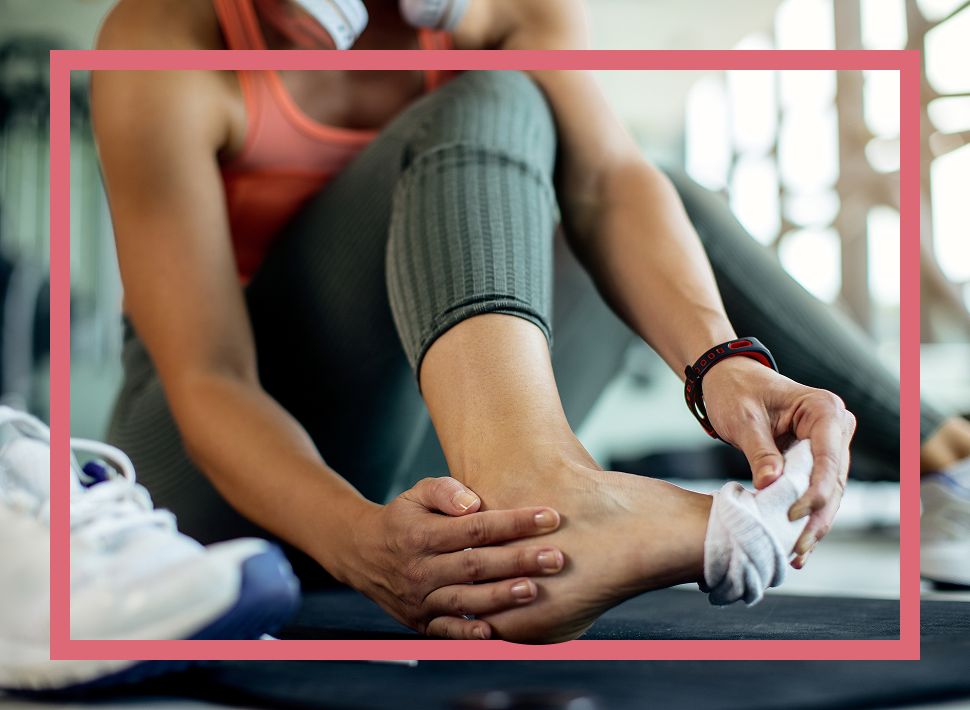A long walk, new shoes or a hike – and there it is: a blister on your foot. What initially only causes slight discomfort can quickly develop into a painful problem.
Many sufferers then ask themselves the same question: to lance the blister or not? Is it better to wait until it heals on its own – or can careful opening relieve the pressure and discomfort? The answer depends on several factors – and on the right approach.
How do bubbles develop in the first place?
Blisters are a protective reaction of the skin. If the upper layer of skin is separated from the underlying tissue due to friction – for example with poorly fitting shoes – the resulting space fills with tissue fluid. This so-called serous fluid protects the sensitive skin underneath from further stress.
Blisters on the foot occur particularly frequently: during sport, long hikes or unfamiliar footwear. Heat, moisture or pressure points can also promote the development of blisters. In many cases, the blister heals on its own – provided it remains intact and is not additionally irritated.
Blisters on the foot: lancing or waiting?
Whether a blister should be lanced or not depends primarily on its size, position and current condition. As a general rule, as long as the blister is closed and not heavily strained, it should remain untouched if possible. This preserves the natural skin protection and reduces the risk of infection.
When lancing can be considered
In certain cases, it may make sense to carefully open a blister – for example, if it is very large, very tight or threatens to rupture on its own. It is important to proceed cleanly and hygienically in order to minimize the risk of infection.
Important: If you have open blisters or signs of inflammation, you should always refrain from piercing – or seek medical advice. This applies in particular to pre-existing conditions such as diabetes, as this increases the risk of infection.
How to do it right
- Wash hands thoroughly
- Disinfect the needle (e.g. with alcohol)
- Carefully pierce the edge of the blister – allow the liquid to drain off
- Preserve the blister roof, dab the wound and cover it with a sterile dressing
- Change the plaster regularly, keep the area clean and dry
If redness, pus or persistent pain occur, a doctor should be consulted. Lancing blisters is not the first measure to be taken, but a decision to be made on a case-by-case basis – and only makes sense if all hygiene requirements are met.
Alternatives to lancing: Blister plasters & co.
Not every blister needs to be opened. It is often sufficient to relieve and protect the affected area until the skin regenerates on its own.
Blister plaster
Modern blister plasters are made of a special hydrocolloid material that acts like a second skin. They absorb excess fluid, cushion the area and create a moist environment that can promote healing – without having to lance the blister.
Pressure relief and cushioning
Classic plasters, soft inserts or foam rings can also help to reduce the pressure. It is important that the blister is not additionally irritated or aggravated by friction.
Foot care and observation
Whether you pierce a blister on your foot or not, regular checks are crucial. If there is redness, oozing or heat development, the skin should be professionally examined.
Tip: In many cases, it makes more sense to wait and take external measures to relieve the skin – especially in the case of superficial, closed blisters.
When to see a doctor?
In most cases, blisters heal without complications. However, in certain situations, medical advice is advisable:
- If there are signs of inflammation: redness, pus, heat or severe pain
- If the blister is very large, deep or bloody
- For pre-existing conditions such as diabetes or circulatory disorders
- When the bladder deteriorates despite care
Experiments should not be carried out on high-risk patients in particular. A medical assessment is important here in order to avoid infections.
Spirularin®: Supplementary care for blisters
If the skin is irritated or slightly injured by a blister, targeted care is particularly important. Spirularin® products, such as Spirularin® HF Gel, are suitable here as a complementary measure to classic blister care.
- They strengthen the skin barrier and promote natural regeneration
- The microalgae active ingredient Spiralin® forms a protective film on the skin that makes it difficult for germs to penetrate
- At the same time, the skin is moisturized, which supports the healing process and reduces the risk of infection
It is particularly helpful when sensitive areas of skin need additional protection and care. Spirularin® does not replace wound care, but can make a valuable contribution to skin health – gently and skin-friendly.
Conclusion
To pierce bubbles or not? – This depends entirely on the situation. Small, closed blisters should be left untouched if possible. Larger, painful blisters can be carefully opened under hygienic conditions.
The right foot care – with protective plasters, gentle cleansing and supportive products such as Spirularin® – can promote healing and minimize the risk of infection. If you are unsure or have noticeable symptoms, it is always advisable to consult a doctor.
FAQ
Experten-Tipp entstand in Zusammenarbeit mit:
Patrick Günther
Patrick Günther completed his pharmacy studies in Hamburg and, after obtaining his licence to practise, worked for several years in marketing and sales in the pharmaceutical industry. In 2003, he took over ocean pharma, the company founded by his father in Reinbek near Hamburg in 1978. Together with his business partner, he patented the important processing and standardisation process for the microalgae active ingredient Spiralin® and developed a wide range of medical cosmetics and foot care products based on Spiralin®.

